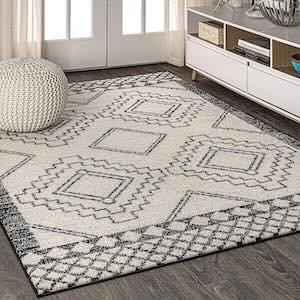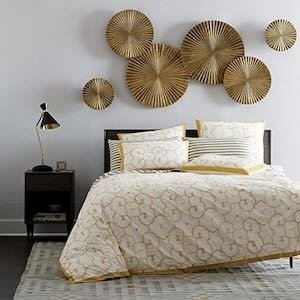
In today’s world of interior design, where trends come and go, two styles have stood the test of time—Art Deco and Mid-Century Modern. These iconic styles, each with unique flair, bridge the past with the present in home design. Understanding these styles is crucial for homeowners and design enthusiasts looking to inject a dose of elegance and sophistication into their spaces. Not only do they add aesthetic value, but they also reflect a rich history that continues to influence contemporary design trends.
Understanding the history of these styles provides valuable insights into their core principles and enduring appeal. Whether you’re a homeowner looking to revamp your space, an interior design enthusiast, or an art collector seeking inspiration, exploring Art Deco and Mid-Century Modern can offer a wealth of ideas for creating a stylish and harmonious environment.
Historical Foundations
The Art Deco Era
Art Deco, short for Arts Décoratifs, emerged in the early 20th century, gaining prominence in the 1920s and 1930s. Originating in France, it was a response to the rapid industrialization and technological advancements of the time. Characterized by its luxury and modernity, Art Deco drew inspiration from various sources, including ancient Egypt, African art, and the Machine Age.
This eclectic mix resulted in a decorative and functional style, often seen in architecture, jewellery, and furniture.
The Rise of Mid-Century Modern
Fast forward to the mid-20th century, and we see the birth of Mid-Century Modern design. This style emerged after World War II, as society embraced a new era of innovation and optimism. Influenced by the Bauhaus movement and Scandinavian design principles, Mid-Century Modern focused on simplicity, functionality, and a connection to nature. It emphasized clean lines, organic forms, and new materials like plastic, plywood, and metal.
Key Characteristics
Art Deco’s Allure
Art Deco is synonymous with luxury and glamour. Its defining characteristics include geometric patterns, bold colours, and lavish materials like marble, gold, and chrome. Art Deco buildings are often adorned with intricate facades and ornate details. Furniture pieces are equally striking, with sleek, symmetrical designs that exude elegance. This style reflects the cultural exuberance of the Roaring Twenties, a time of economic prosperity and artistic exploration.
The Simplicity of Mid-Century Modern
In contrast, Mid-Century Modern design embraces simplicity and functionality. Its key features include minimalistic designs, open floor plans, and an emphasis on natural light. The colour palette is often neutral, with pops of vibrant hues that add visual interest. Furniture pieces, such as the iconic Eames Lounge Chair, showcase the beauty of form and function with ergonomic designs that prioritize comfort. This style reflects the post-war optimism and the desire for a more relaxed and accessible way of living.
Key Distinctions between Art Deco and Mid-Century Modern Styles
While both Art Deco and Mid-Century Modern are rooted in modernism, they differ significantly in their approach to design. Here are some key differences between the two styles:
Art Deco:
- Architectural Elements: Known for symmetrical and bold designs, Art Deco features motifs such as sunbursts, chevrons, and zigzags.
- Quintessential Examples: Notable structures like the Chrysler Building in New York City and Claridge’s Hotel in London exemplify Art Deco architecture, showcasing intricate facades and opulent interiors.
- Colour Palette: This style embraces vibrant colours, including gold, black, and deep reds, often complemented by metallic accents.
- Furniture Design: Crafted from luxurious materials like ebony, ivory, and lacquer, Art Deco furniture features elaborate inlays and geometric patterns.
Mid-Century Modern:
- Integration with Environment: This architectural style emphasizes harmony with nature, utilizing large windows and open floor plans to create a seamless connection between indoor and outdoor spaces.
- Prime Examples: Eichler Homes in California are prime representations of this style, highlighting flat planes, extensive glass usage, and a focus on functionality.
- Colour Palette: Mid-Century Modern favours earthy tones such as olive green, mustard yellow, and burnt orange, reflecting a desire for simplicity and a connection to the natural world.
- Furniture Design: Characterized by iconic pieces like the Eames Lounge Chair, Mid-Century Modern furniture employs materials such as plywood, leather, and metal, prioritizing functional design and comfort.
In summary, both styles offer unique features and benefits. Understanding these distinctions allows for informed choices in architectural and design applications, showcasing the innovative spirit that defines each movement.
Impact on Modern Design & Current Significance
Art Deco and Mid-Century Modern styles continue to shape contemporary design trends significantly. The bold patterns and metallic accents of Art Deco are evident in modern luxury interiors, exuding a sense of opulence. Meanwhile, Mid-Century Modern design’s emphasis on simplicity and functionality aligns seamlessly with the minimalist movement, where clean lines and uncluttered spaces are increasingly favoured.
By appreciating these timeless styles, homeowners can incorporate their distinctive elements into modern spaces, creating a unique and sophisticated aesthetic.
Incorporating Art Deco and Mid-Century Modern
Blending Art Deco and Mid-Century Modern styles in your home design requires a thoughtful and intentional approach. Here are some strategies to help you achieve a harmonious fusion:
- Familiarize Yourself with the Basics: Start by understanding the defining features of both styles. This knowledge will guide your design choices and help create a cohesive aesthetic.
- Select Your Color Palette: Art Deco often embraces bold colours like emerald green, sapphire blue, and rich burgundy, while Mid-Century Modern favours neutral tones such as white, grey, and beige. Aim to incorporate accents from one style’s colour palette into the other for a balanced look.
Mindfully Mix Materials:
Step 1: Choose Key Furniture Pieces
Begin with an Art Deco-inspired chandelier to be a stunning focal point in your living room. Pair it with a sleek Mid-Century Modern sideboard featuring clean lines and warm wood tones to achieve visual balance.
Step 2: Define Your Color Palette
Utilize the bold, rich colours characteristic of Art Deco, like deep blues or emerald greens. Incorporate muted earth tones, such as mustard yellow or olive green, common in Mid-Century Modern design. Consider painting an accent wall in a striking Art Deco colour and complementing it with Mid-Century Modern furniture in softer hues.
Step 3: Add Accessories
To create depth, look for geometric rugs that reflect the Art Deco style and layer them over a neutral Mid-Century Modern rug. Incorporate abstract art pieces that bridge both styles, such as colourful geometric prints that echo Art Deco shapes while maintaining the simplicity of Mid-Century aesthetics.
Step 4: Integrate Vintage Decor
Use a classic Art Deco mirror to bring elegance to your space. Introduce a vintage Mid-Century lamp to add a functional yet stylish element.
By following these steps and thoughtfully combining elements from both styles, you can create a harmonious space that celebrates the glamour of the past alongside the simplicity of modern design.
Budgeting and Discovering Genuine Pieces
KAISITE Modern Sputnik Chandelier – 8-Light Ceiling Light Fixture Height Adjustable Mid Century Plating Finished Black and Gold Chandelier for Bedroom Living Room Dining Room Kitchen Foyer
- Uses 8 medium-base E26 bulbs, 40W max (bulbs not included).
- Fully dimmable with dimmable bulbs and compatible dimmer switch.
- Adjustable height with 4 extension rods, up to 52.8 inches.
- Can be mounted on vaulted or angled ceilings with a durable swivel.
- UL certification ensures high quality, safety, and durability.
- Brushed copper and black paint finishes offer luxury and mystery.
- Pre-wired arms for easy installation with included mounting hardware.
- Excellent customer service and technical support available.
Mopio Aaron Couch, Small Sofa, Futon, Sofa Bed, Sleeper Sofa, Loveseat, Mid Century Modern Futon Couch, Sofa Cama, Couches for Living Room, Bedroom
- Dimensions: 76.8″W x 31.5″D x 27.8″H (Sofa)
- Dimensions: 76.8″W x 36.2″D x 22.8″H (Bed)
- Firm support with comfy, cushy mid-century modern sofa
- Split back fold-down for sitting, lounging, sleeping
- Maximize space usage day to night
- Adjust each seat individually for custom comfort
- Bespoke armrest, cushy seating, ergonomic backrest
- Simple 2-person assembly in 20 minutes
- Expect color variance due to lighting/device settings
- Measurements may vary up to 0.5 inches
JONATHAN Y MOH200A-4 Amir Moroccan Beni Souk Indoor Area-Rug Bohemian Farmhouse Rustic Geometric Easy-Cleaning Bedroom Kitchen Living Room Non Shedding
- Durable for high-traffic areas; perfect for families with kids and pets.
- Low-pile synthetic rug fibers are pet-friendly and won’t trap dirt or debris.
- Machine-woven rug fibers ensure non-shedding and long-lasting quality.
- Water and stain-resistant synthetic fibers, easy to clean and maintain.
- Vacuum regularly and spot clean with mild detergent when necessary.
- Raise or turn off vacuum beater bars for proper care and longevity.
- Professional rug cleaning recommended for deep or stubborn stains.
- Features a modern black and ivory color scheme inspired by Moroccan rugs.
HAUS AND HUES Modern Abstract Prints Modern Prints Wall Art | Mid Century Modern Abstract Art Prints Posters, The Mid-Century Modern Home
- Adds vitality with modern boho designs featuring geometric shapes and bold colors.
- Set of 4 art prints inspired by nature, like ocean waves and rain.
- Museum-quality posters made from premium materials for long-lasting beauty.
- Packaged in reinforced mailers to ensure safe and pristine delivery.
- Mid-century modern wall decor manufactured and quality-assured in the USA.
- Abstract art blends well with geometric prints and landscape decor.
- Can be framed and displayed together for a cohesive or quirky gallery wall.
Decorlives Round Sunburst Metal Wall Art | Modern Metal Wall Hanging Décor Sculpture for Living Room Bedroom Home Office (Bright Gold | Set 6-2 Large(24″)
- Set includes six metal pieces: two large, two medium, and two small circles.
- Crafted from high-quality metal with a bright gold finish for durability.
- Sunburst design brings warmth and energy to any living space.
- Suitable for modern, contemporary, or eclectic interior design themes.
- Versatile placement for living rooms, bedrooms, offices, or hallways.
- Reflective metallic finish enhances visual appeal by catching light.
- Easy to install with included instructions and mounting hardware.
- Ideal for creating a balanced and visually dynamic wall composition.
Conclusion
Art Deco and Mid-Century Modern are pillars of timeless elegance and sophistication in home design. By understanding their historical roots, defining characteristics, and visual inspirations, homeowners and design enthusiasts can confidently incorporate them into their spaces. Whether you’re drawn to Art Deco’s opulence or Mid-Century Modern’s simplicity, there are endless possibilities for blending the past with the present in your home.
For those inspired to take the next step, consider exploring more resources or consulting a professional interior designer to achieve your vision. These styles not only enhance the aesthetic appeal of your space but also offer a connection to a rich cultural heritage that continues to shape contemporary design trends.






Oh my goodness! an incredible article dude. Thanks Nonetheless I’m experiencing issue with ur rss . Don’t know why Unable to subscribe to it. Is there anybody getting similar rss problem? Anyone who is aware of kindly respond. Thnkx